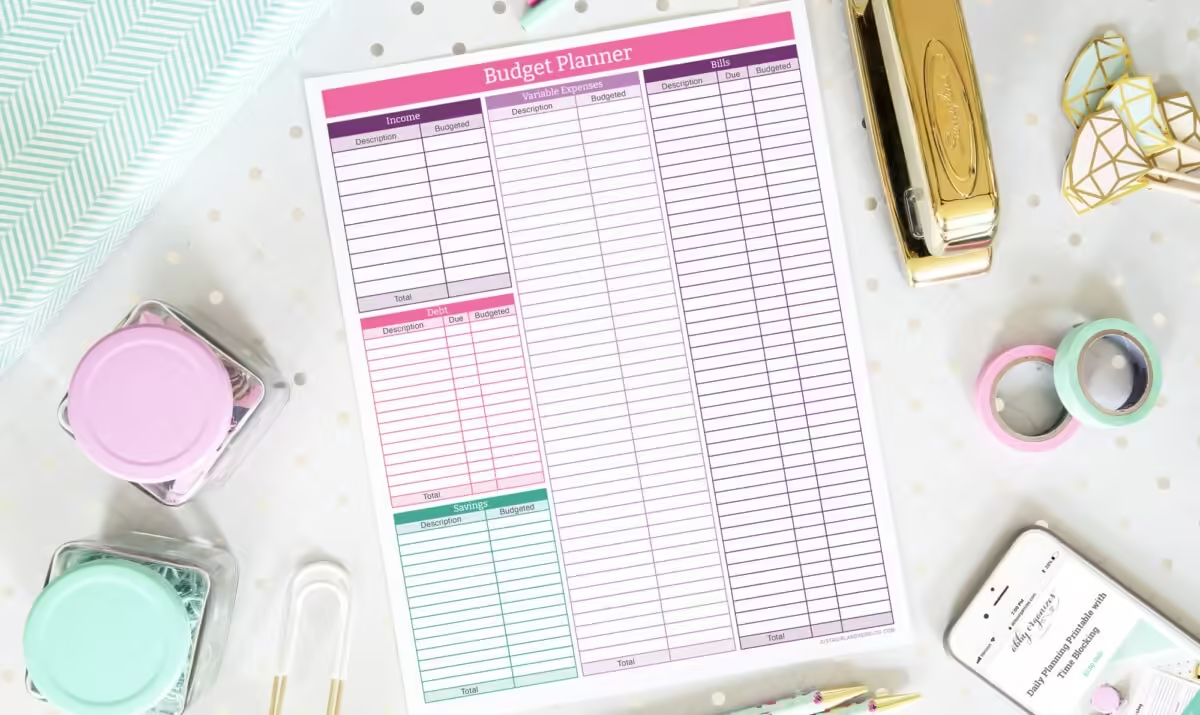Let’s face it: budgeting can feel like trying to eat kale when you’d rather have pizza. But what if I told you there’s a simple, no-stress way to manage your money that doesn’t make you feel guilty every time you splurge on a coffee? Enter the 50/30/20 rule—the budgeting method that keeps things easy, breezy, and dare I say it, fun.
So, what is the 50/30/20 rule, and how can it help you manage your money without turning your brain into a calculator? Let’s break it down!
Contents
What is the 50/30/20 rule?
The 50/30/20 rule is a budgeting strategy that splits your monthly income into three neat little categories:
- 50% for needs (the must-haves, aka boring-but-essential stuff)
- 30% for wants (the fun stuff that makes life enjoyable)
- 20% for savings and debt repayment (future you will thank you)
That’s it. Simple, right? You don’t need to track every single dollar or spend hours calculating where your money’s going. With this rule, all you need to do is focus on these three buckets.
Let’s break down the buckets:

50% for needs: Keep the lights on and the fridge stocked
This is the category where you handle all the non-negotiable stuff. Rent? Yep, that goes here. Groceries? Definitely. Electricity? Uh-huh. If you need it to survive or stay sane (think health insurance, minimum debt payments, and transportation costs), it falls under the “needs” bucket.
Now, here’s the trick: be honest with yourself about what’s truly a need. That daily mocha latte might feel like a necessity, but it probably fits better into the “wants” category. (Yes, I know. Tough love.) Things like Netflix, while wonderful, are wants, not needs. But hey, if you can’t imagine life without it, no one’s judging!
In short: 50% of your income goes to the stuff that keeps you safe, fed, and sheltered. If you’re spending more than half your paycheck on needs, it might be time to take a closer look at your expenses and see where you can trim. This is where you want to ask yourself: is there a cheaper apartment, or could I save by meal prepping instead of eating out every lunch?
30% for wants: Treat yourself—responsibly!
This is the category we all love: wants. This is your fun money—the cash you can spend guilt-free on the things that make life a little more sparkly. Dinner out with friends? Shopping spree? Weekend getaway? All of those go under the 30% “wants” category.
Here’s where it gets tricky: it’s really easy to blur the lines between wants and needs. You need clothes, but you don’t need those designer sneakers that cost more than your car payment. And yes, food is a necessity, but eating at that five-star restaurant every weekend definitely falls into the “want” zone.
But the great thing about the 50/30/20 rule is that you don’t have to feel guilty about spending money on the things you enjoy, as long as you’re sticking to your 30%. This isn’t about deprivation. It’s about making sure your spending is balanced, so you can have fun without ending up with a surprise credit card bill that makes you break out in a cold sweat.
So go ahead and treat yourself—just keep it within your 30%.
20% for savings and debt: Future you deserves some love
Finally, we’ve got the last (and arguably the most important) bucket: 20% for savings and debt repayment. This is the category where you’re investing in the future-you. Whether you’re saving for a rainy day, tackling student loans, or building an emergency fund, this 20% is about setting yourself up for financial stability.
Here’s the deal: you’ll want to prioritize things like paying off high-interest debt (because, let’s be honest, that stuff is a money-sucking vampire) and building up a solid savings cushion. If you can, try to save for retirement, too—because trust me, your future self will really appreciate it.
If 20% seems like a lot to throw into savings and debt, start where you can. Even if it’s 10% or 5%, the key is to develop the habit of setting money aside for your future. Little by little, your savings will grow, and you’ll feel more secure knowing you’re handling your finances like a pro.
How to implement the 50/30/20 rule
Now that you know the basics, let’s talk about how to actually put the 50/30/20 rule into practice without pulling your hair out. Here’s a step-by-step guide:
Step one: Calculate your monthly income
First, figure out your after-tax income. This is the money that actually lands in your bank account after Uncle Sam takes his cut.
Step two: Break it down
Multiply your income by 0.5, 0.3, and 0.2 to see how much you should allocate to needs, wants, and savings. For example, if you bring home $3,000 a month, you’ll have:
- $1,500 for needs
- $900 for wants
- $600 for savings/debt repayment
Step three: Track your expenses
Start by categorizing your current spending into needs, wants, and savings. This will give you a clear picture of where your money’s going and whether you need to adjust. Spoiler alert: you might be spending more on wants than you think (hello, online shopping carts full of impulse buys!).
Step four: Adjust as needed
If your needs take up more than 50%, see if there’s room to cut back or reallocate. Maybe it’s time to switch to a more affordable phone plan or ditch that subscription box you never use.
Step five: Automate your savings
Make it easy on yourself by setting up automatic transfers for the savings and debt category. That way, you don’t even have to think about it—it just happens like financial magic.
Why the 50/30/20 rule works

The beauty of the 50/30/20 rule is its simplicity. It doesn’t require spreadsheets with 100 different categories or hours of micromanaging every dollar. Instead, it gives you a straightforward structure to follow, leaving room for flexibility and fun.
It’s also great because it helps you avoid the extremes. Some budgeting methods make you feel like you can’t spend on anything fun without blowing up your budget. But with this rule, you get to enjoy life while still being responsible with your money.
Plus, by prioritizing savings and debt repayment, you’re building financial stability for the future. And that’s a win-win.
The bottom line: Make it your own
The 50/30/20 rule is a fantastic starting point, but remember—it’s not set in stone. If your situation requires more savings or higher fixed costs, feel free to tweak the percentages. The point is to create a system that works for you.
At the end of the day, budgeting doesn’t have to be stressful. The 50/30/20 rule gives you the freedom to enjoy your money now while also planning for the future. You get to treat yourself, pay your bills, and save without feeling like you’re stuck in a financial straight jacket. What’s not to love?
So go ahead—grab your paycheck and give the 50/30/20 rule a try. You might be surprised at how easy (and even enjoyable) budgeting can be!






